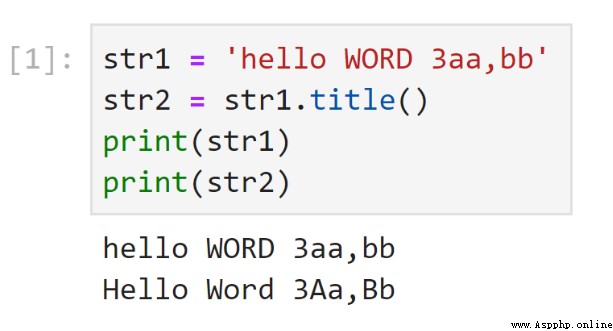def Keyword declaration , use return Keyword return value .def my_function(x, y, z=1.5):
if z > 1:
return z * (x + y)
else:
return z / (x + y)
Can have multiple at the same time return sentence , If you don't encounter... When you reach the end of the function return, Then return to None.( and c The language is different )
Functions can have some positional arguments ( Do not specify a default value ) And keyword parameters ( Specify default ).
however , Keyword parameter must be in positional parameter ( If any ) after .
my_function(5, 6, z=0.7)
my_function(3.14, 7, 3.5)
my_function(10, 20)
my_function(x=5, y=6, z=7)
my_function(y=6, x=5, z=7)
Function can access variables in two different scopes : overall situation (global) And parts (local).
Python There is a more scientific , The name used to describe the variable scope , Namespace (namespace).
Any variable assigned to a function , By default, they are assigned to local namespaces .
Local namespaces are created when a function is called , The function parameters will immediately fill in the namespace .
global Keyword to declare a parameter in a function as a global variable .python
def f():
a = 5
b = 6
c = 7
return a, b, c
a, b, c = f()
def f():
a = 5
b = 6
c = 7
return {
'a' : a, 'b' : b, 'c' : c}
return_value = f()
re modular .In [171]: states = [' Alabama ', 'Georgia!', 'Georgia', 'georgia', 'FlOrIda', 'south carolina##', 'West virginia?']
import re
def clean_strings(strings):
result = []
for value in strings:
value = value.strip()
value = re.sub('[!#?]', '', value)
value = value.title()
result.append(value)
return result
(1)strip() Method
strip() Method is used to remove the characters specified at the beginning and end of a string ( The default is space or newline ) Or character sequence .
Return value : Modified character sequence .
Be careful : This method can only delete the characters at the beginning or the end , Middle part characters cannot be deleted .
(2)sub() Method
sub() Method is used to query and replace ,sub() The format of the method is :
re.sub(pattern, repl, string, count=0, flags=0)
pattern: Represents the pattern string in regular ;
repl: Represents the string to replace ( Match to pattern Replace with repl), It can also be a function ;
string: Means to be processed ( Search and replace ) Original string of ;
count: Optional parameters , Indicates the maximum number of times to replace , And it has to be a nonnegative integer , This parameter defaults to 0, That is, all matches will replace ;
flags: Optional parameters , Represents the matching pattern used at compile time ( If case is ignored 、 Multiline mode, etc ), Digital form , The default is 0.
(3)title() Method
title() Function of method : Converts the first letter of all words in a string to uppercase , All other letters are converted to lowercase .
【 Particular attention 】 If you encounter punctuation in a string 、 Space 、 Numbers and other non alphabetic elements , Then the first letter after the non alphabetic element is converted to uppercase , Other letters are converted to lowercase .

map yes python Built in functions for , The specified sequence will be mapped according to the provided function .
map() The format of the function is :
map(function, iterable,...)
The first parameter accepts a function name . The latter parameter accepts one or more iteratable sequences , What is returned is a collection .
Put the functions on list On every element in , Get a new one list And back to . Be careful :map The function does not change the original list, Instead, it returns a new list.
del square(x):
return x ** 2
map(square,[1,2,3,4,5])
# give the result as follows :
[1,4,9,16,25]
map(None,[2,4,6],[3,2,1])
# give the result as follows
[(2,3),(4,2),(6,1)]
Python Supports an anonymous function , This function consists of only a single statement , The result of this statement is the return value .
adopt lambda Keyword definition , representative “ What is being declared is an anonymous function ”.
def short_function(x):
return x * 2
equiv_anon = lambda x: x * 2
def apply_to_list(some_list, f):
return [f(x) for x in some_list]
ints = [4, 0, 1, 5, 6]
apply_to_list(ints, lambda x: x * 2)
amount to :[x *2 for x in ints]
def func(x,y):
return x+y
# It's equivalent to the following lambda
lambda x,y: x+y
In [177]: strings = ['foo', 'card', 'bar', 'aaaa', 'abab']
In [178]: strings.sort(key=lambda x: len(set(list(x))))
In [179]: strings
Out[179]: ['aaaa', 'foo', 'abab', 'bar', 'card']
T = (123, 'Google', 'Runoob', 'Taobao')
L1 = list(T)
print (" List elements : ", L1)
S="Hello World"
L2=list(S)
print (" List elements : ", L2)
###############################################
List elements : [123, 'Google', 'Runoob', 'Taobao']
List elements : ['H', 'e', 'l', 'l', 'o', ' ', 'W', 'o', 'r', 'l', 'd']
set() Function to create an unordered collection of non repeating elements .
Relationship testing is possible , Delete duplicate data , You can also compute the intersection 、 Difference set 、 And set etc. , Returns a new collection object
sort(*, key=None, reverse=False)
key Use of functions : Apply it to each list item , And sort the list in ascending or descending order according to their function values .reverse Set the reverse flag , Set to sort in ascending and descending order .